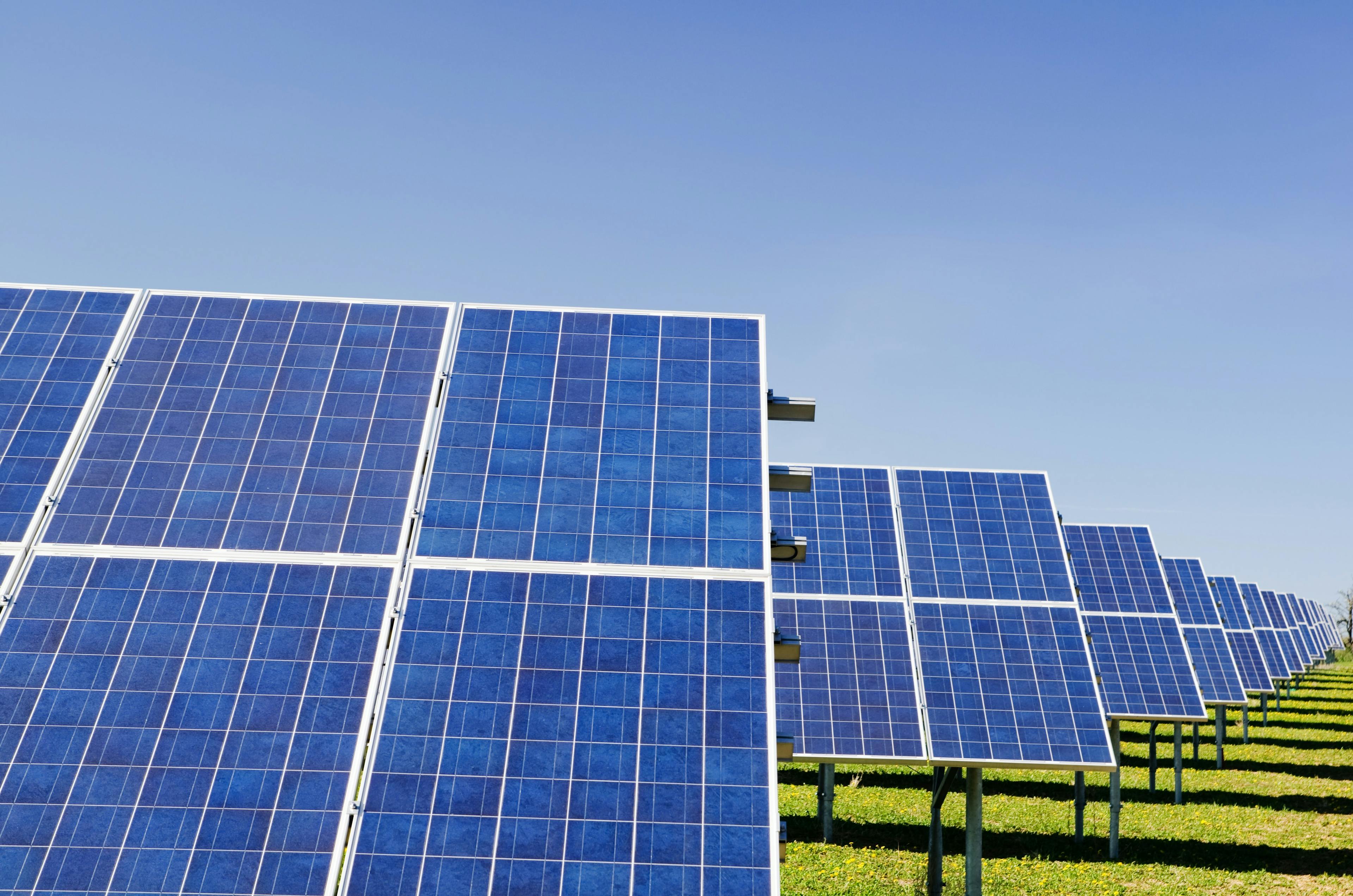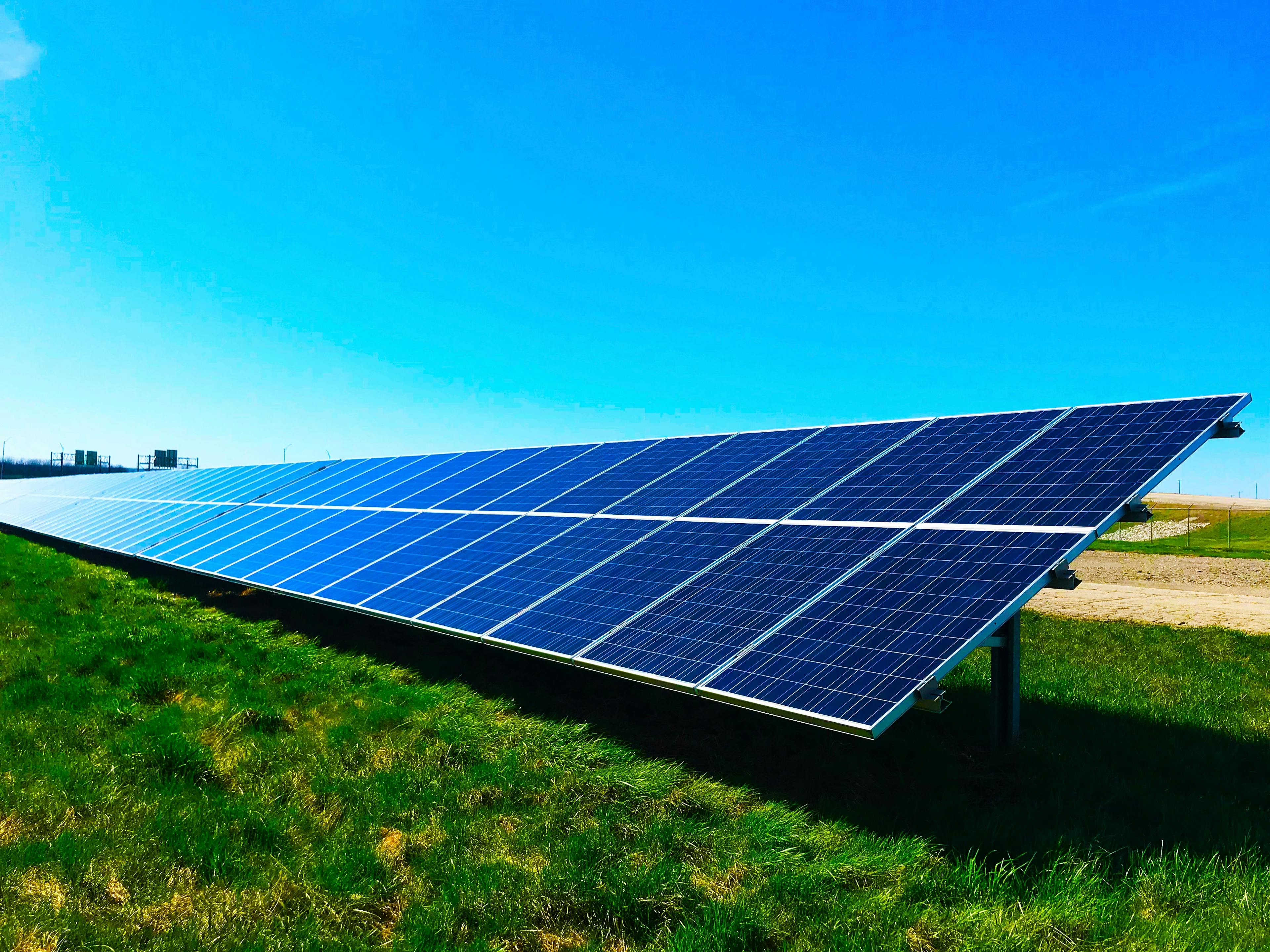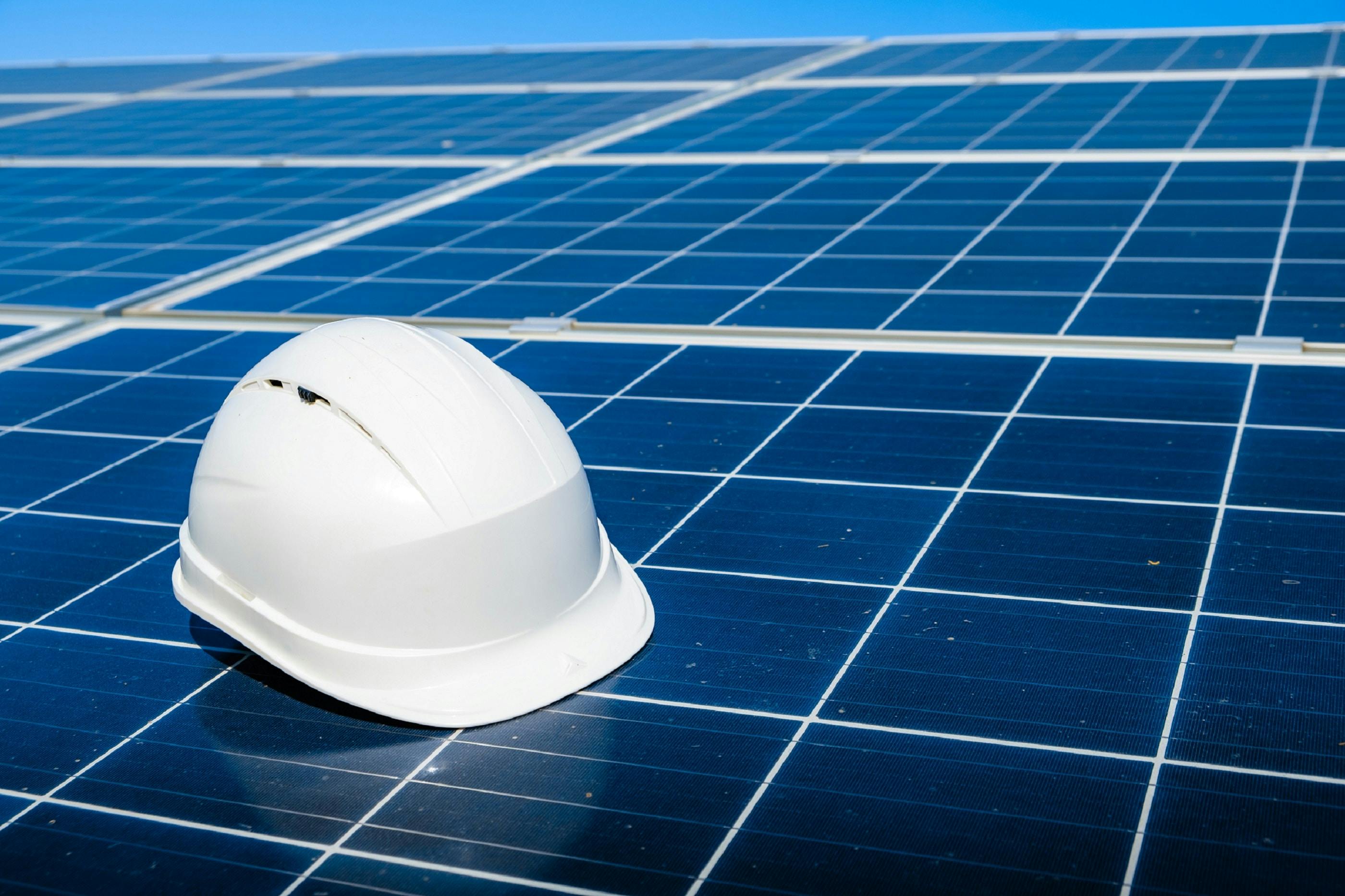Solar Repowering: Breathing New Life into Old Solar Installations
10 Oct 2023

Renewable energy systems have grown rapidly in the last few decades and become so ingrained in how we produce, store and distribute power. It’s now time to start thinking about how to renew the renewables.
As solar plants get old, their output degrades. It often makes sense to invest in reversing this degradation, which occurs via a process known as solar repowering. This catch-all term encompasses regeneration, repair and re-evaluation of the technical specification within a solar project. The objective is to re-optimise based on the latest available technological updates.
Here’s how solar repowering can be assessed as a viable option, safely managed and optimised.
What is Solar Repowering?
Solar projects have a finite lifetime and are in need of solar repowering. This is the process of replacing damaged, decayed or outdated solar project components, such as Photovoltaic cells (PV).
This presents an economically attractive and simple way of keeping models active and efficient. The alternative is replacing the entire system with large wastage and decreasing return on investment.
Active repowering of a solar power plant accelerates the transition to clean energy and optimises space. The most impactful change has been the size-efficiency of new modules and parts. Hence, project owners have access to make more money from the land through increased energy production. This revenue has added value to the installation which is already built. It also keeps projects compliant with changing regulations.
Common forms of solar repowering include:
- Replacement of obsolete inverters and PV modules
- Refining grid connection
- Redistributing the system
- Replacement of the balance of system components
- Changing the system’s electrical configuration
- Installing new software platforms
How Long Do Solar Panels Last?
The majority of solar panel manufacturers guarantee a lifespan of 25-30 years for their products. Yet, most will continue to produce energy after this period — just at a much less efficient rate year on year. The industry standard payback period for solar panels currently sits between 6-10 years.
Solar panels will naturally degrade over time, as they’re exposed to sunlight, heat, other weather conditions and debris. Humidity has also been particularly highlighted as a harmful factor in solar panel lifespans. Altogether this means that routine maintenance is necessary. Gradually, these factors impact the speed at which panels convert sunlight to energy over time. This is usually measured as a percentage of power output lost.
Most industry-standard solar panels have an annual degradation rate of 0.5%, which compounds year-on-year. Most solar panels will still be operating between 75-80% of their original capacity within 25-30 years. After this period, inefficiencies begin to generate too much heat and the system enters a phase of more rapid decline. While inevitable, this degradation can be delayed and fully reversed. Reverting back to original productivity requires the installation of durable and reliable replacement parts.
Heat itself degrades or impairs the performance of most electrical components. Think about 'old-school computers'. High-end PCs in the 90s and early 00s were super-cooled with liquid nitrogen for this very reason. Solar project componentry is no different. The optimal conditions are simultaneously sunny and cool - a classic paradox.

Benefits of Solar Repowering: Why it is Necessary?
Solar repowering is not just a beneficial solution to damaged or degrading panels. It is a necessary one with a range of benefits to upgrading your solar power plant:
- Increased Efficiency: Transitioning to modern panels is necessary because panels lose conversion efficiency. Over a given area, new panels produce more energy. Therefore, a developer has a choice for a continued return on investment. Either they increase the energy production for a finite area or use a smaller physical footprint for the same energy production.
- Extended Lifespan: The repowering process replaces outdated technology with up-to-date panels. These are durable, efficient systems that can add years of operational life to a solar project
- Financial Incentives: Replacing outdated PV equipment is a long-term investment. Nevertheless, many financial incentives exist.
The UK government offers many tax and payment incentives for keeping solar panels efficient and up-to-date. For example, the Smart Export Guarantee (SEG), which pays producers for excess electricity exported to the National Grid.
- Outdated Technology: Technology has evolved rapidly since the early days of solar. New models have significantly improved performance and efficiency. This is facilitated through streamlined operational systems (such as string-level monitoring). Moreover, there are new innovative battery systems and radically improved efficiency.
- Maintenance and Repairs: Solar panel installations purchased during 2010’s are relatively old. These will likely contain components that are no longer produced or supported by manufacturers. Thus, the longer panels are untouched is proportional to the number of unavailable vital components. This could compromise the device permanently.
- Environmental Impact: Frequent optimisation of older systems allows for the installation of new renewable energy technology. Maximising energy generation further reduces the carbon footprint of running solar panel devices.
Challenges and Considerations
Solar repowering improves the health and efficiency of solar panels. However, repowering comes with several challenges and considerations.
- Financial costs: The average commercial solar panel payback takes 6-10 years. However, upkeep through repowering adds additional costs on top of the initial investment. This investment is crucial for keeping devices efficient and producing energy at the standard rate.
Likewise, mixing new and old solar panel models within one project can cause issues with batteries and inverters. Any imbalance could cause further maintenance headaches. In this scenario, it can be more efficient to conduct a full-scale update.
- Waste management: Solar repowering and upkeep often involve the replacement of outdated parts with new ones. This raises the issue of what happens to old solar panel components.
- Key solar panel components are largely made of glass, plastic and aluminium, three recyclable materials. Recycling silicon solar panel modules involves a more careful disassembly process. These technical parts result in a delicate and time-consuming process.
- Legal: Regulations centred on ground-mounted PV systems and rooftop PV systems still differ as of 2023.
The German Renewable Energy Sources Act (EEG) centres around ground-mounted PV system modules. It permits module replacement for increased efficiency without sacrificing entitlement to payment. Yet, analogous payment entitlement for rooftop PV systems has limitations. It is still only retained if the reason for replacement is a technical defect, damage, or theft.
How to Repower a Solar Project
Solar repowering can be an ultimately simple process, as long as the right procedures are followed. Yet, it should not be started until the issues with your panels have been properly and professionally assessed. It’s also worth considering as part of any solar development process a plan of action to tackle solar repowering when the time comes.
Preliminary Assessment
Firstly, you should evaluate the current performance of your solar farm. Here you are looking for common signs of degradation caused by weather, humidity and debris. Afterwards, you can identify the outdated components and other common inefficiencies. Common and significant inefficiencies include internal corrosion or Potential Induced Degradation (PID effect).
Consultation
Once the issue has been identified, engage with solar repowering specialists for advice on how to best repair your device. This be identifying parts for replacement to protect the asset in the future.
Cost Analysis
Based on your faults, conduct a breakdown of the potential expenses involved in the repowering. Important things to factor in include:
- Equipment
- Labour costs
- Income lost from the replacement/repairing process
- Recycling costs
Financial Routes
Repowering a solar power plant can be expensive. There are several routes for financing solar repowering, especially if you wish to replace or expand your solar project at scale.
This is where cleantech platforms like PF Nexus can help. Solar project owners have free access to our renewable energy project marketplace. There, they can list their projects for potential investors to review and invest in. This offer is everything from small solar farms looking to scale, to new establishing initiatives. Also included are repowering projects.
Financial routes to consider include:
- Self-funding: repowering through the use of personal capital reserves or profits
- External investment: Seeking external investors and partnerships
- Government grants: Grants, subsidies and low-interest loans specific to renewable projects and enhancements
Project Finance & PPAs: Whilst not a funding source per se, securing a PPA will only help your chances of securing investment and/or debt. Securing buyers for the power produced by your projects post-repowering (known as Power Purchase Agreements) is significant. The main reason is to de-risk revenue streams. Developers then have clarity on cash flow availability clarity and can budget the use of increased future cash flows. Increased cash flow from repowering can service any debt repayments required to fund them in the first place.

Looking Ahead: The Future of Solar Repowering
The solar energy industry has grown rapidly in the last 15 years. This has enabled investment for new and upscaling projects transforming the way to consume energy.
Advancements cause inherent maintenance and the avoidance of frustrating part management and recycling. Repowering often presents an optimal alternative to maximising production and extending project lifetimes. Moreover, it avoids postponing or avoiding mass decommissioning of solar projects.
Solar technology advancements have focussed on developing ever smaller devices and improved efficiency. One example is pyramidal lenses. These are designed to rapidly concentrate solar intake, reduce space taken up on farms and provide room to scale.
The solar market has become very established. Subsequently, pioneers are exploring ways to transition away from utility-scale projects. New offerings have benefits for mass-market consumers and investors. Investors are usually keen to diversify their project portfolio.
This could present a double-edged sword. Both in the importance of repowering, or highlighting new necessary innovations. Innovations are important to keep diverse technologies viable. These new innovations include:
- Solar Glass
- Thin-Film Panels
- Solar Balloons
- Solar Paint
- Space-based Models
- Improved battery storage systems
The utilisation of PF Nexus and other clean tech platforms will be necessary for the future of solar repowering. They offer alternative investment opportunities as “Big Energy” seeks to transition. The transition can capitalise on existing and emerging greenfield and brownfield space.
Conclusion
Solar repowering is crucial in investment protection and ensuring the full potential of renewables is realised.
Investors and project managers alike must do their best to be educated about the importance and process of solar repowering. However, this isn't enough. As important is considering the viability and current efficiency of their own installations.